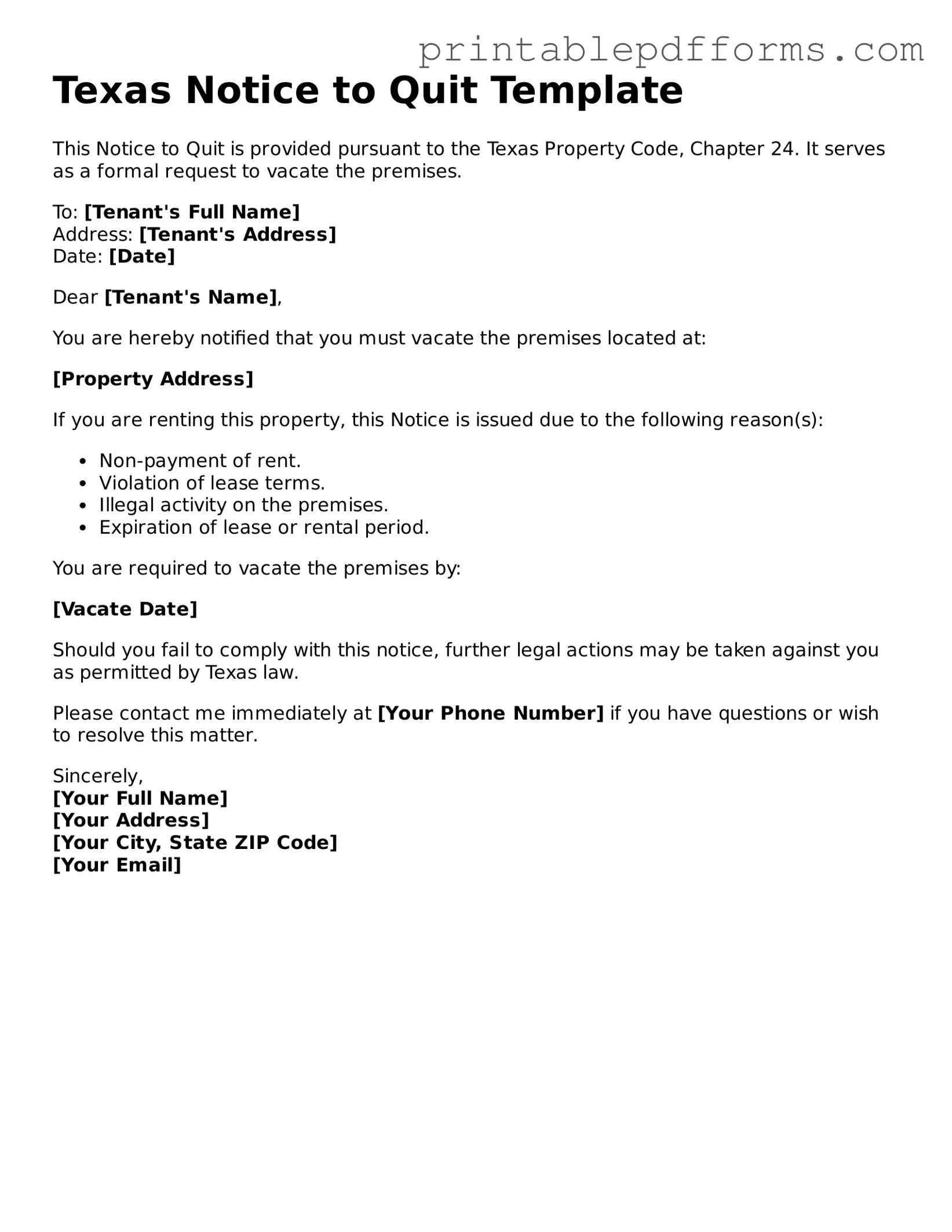Texas Notice to Quit Document
The Texas Notice to Quit form is a legal document that landlords use to notify tenants of their need to vacate a rental property. This form serves as a formal request, outlining the reasons for the eviction and providing a timeline for the tenant to leave. If you're facing a situation that requires this notice, take the first step by filling out the form; click the button below.
Create This Document Online
